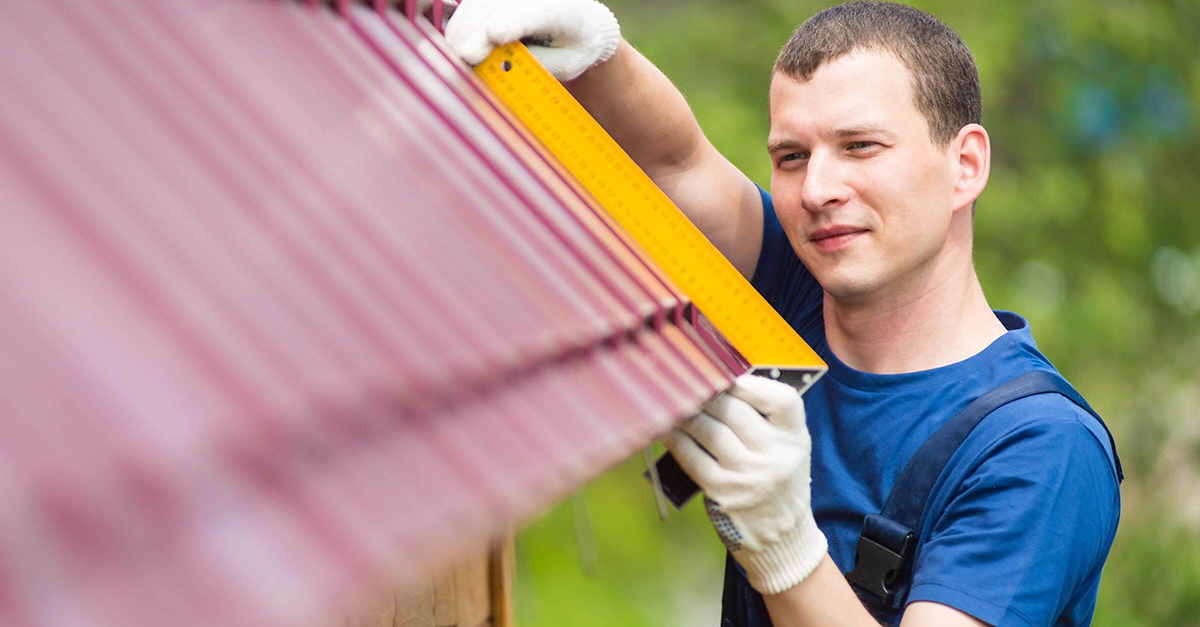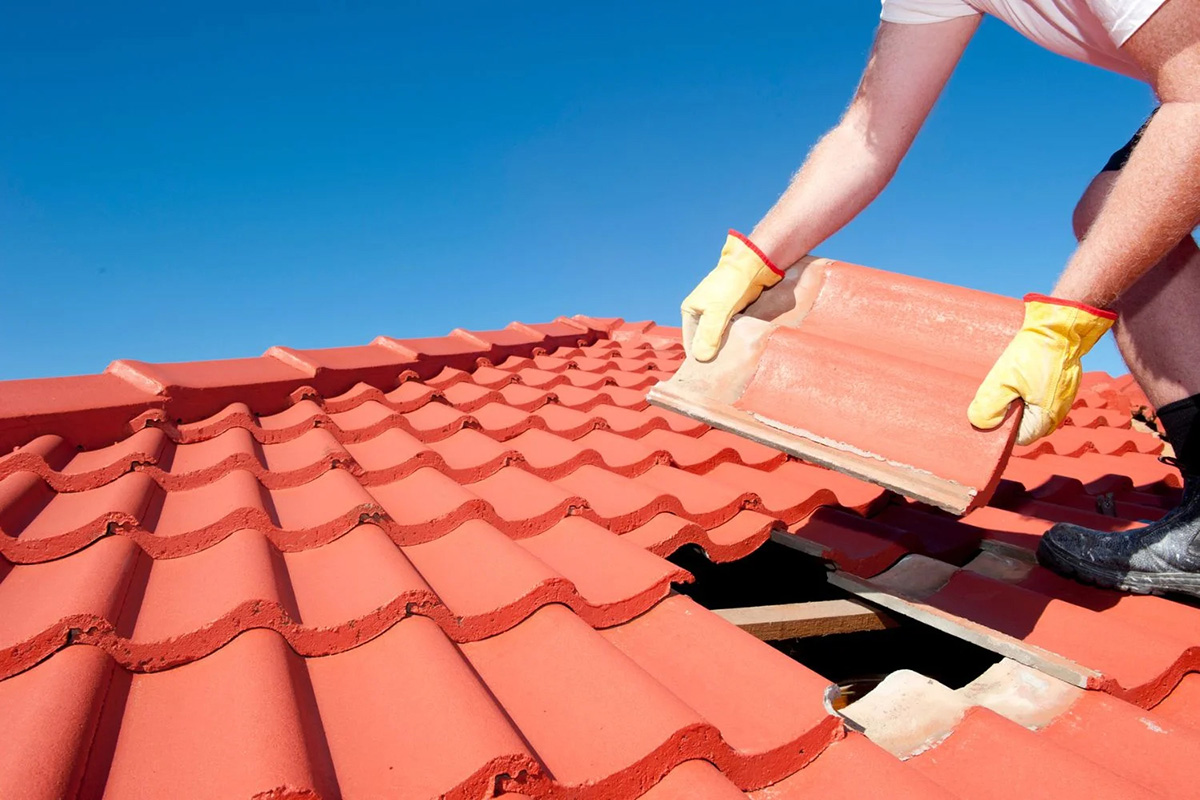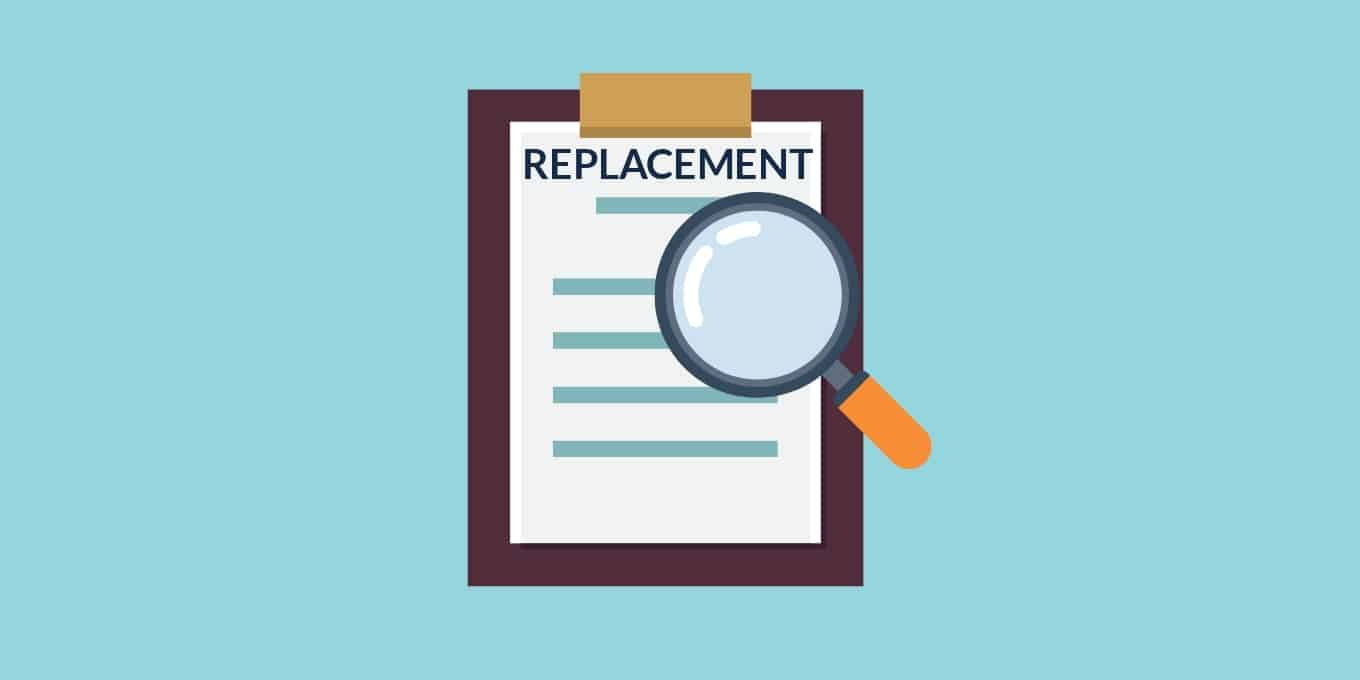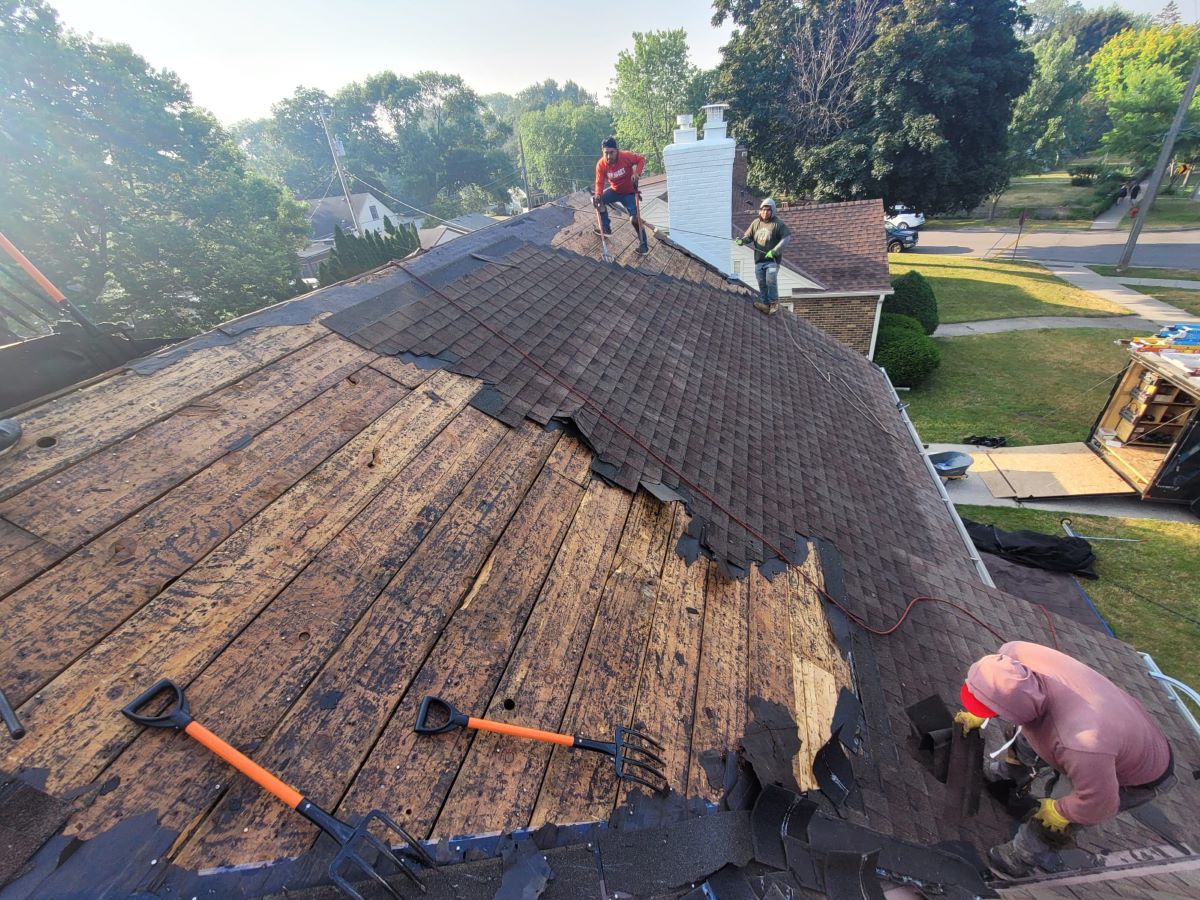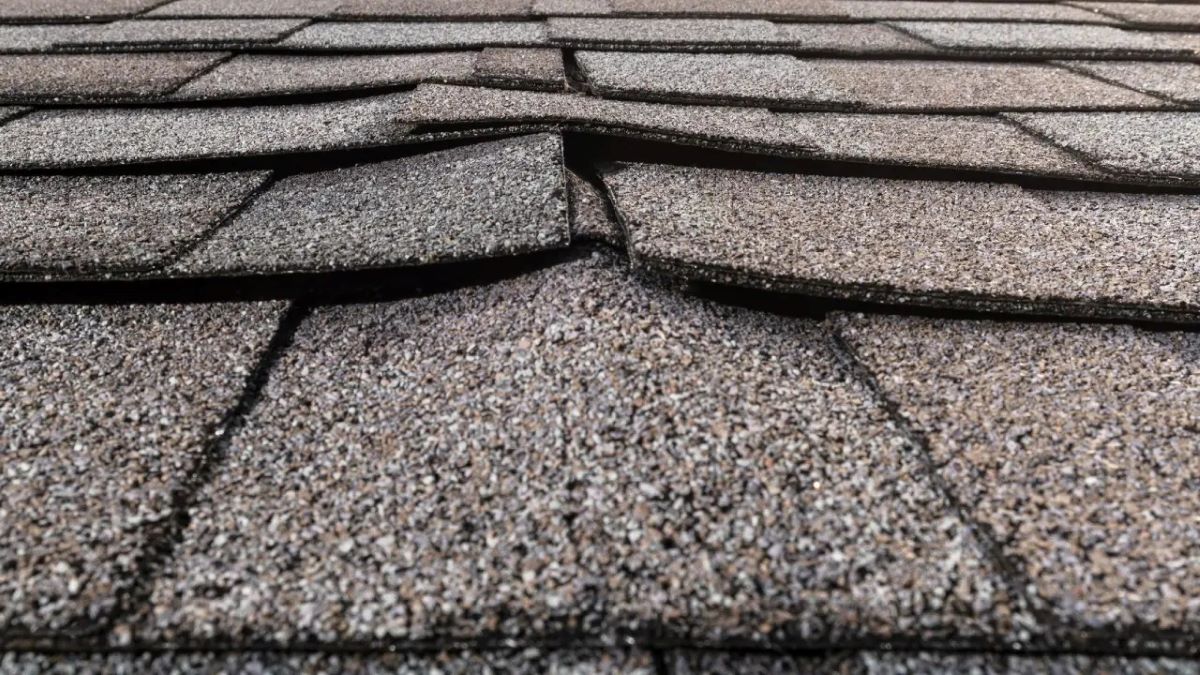

Finance
How To Get Insurance To Replace Roof
Published: November 22, 2023
Looking for finance options to replace your roof? Learn how to get insurance coverage for roof replacement and secure your financial investment.
(Many of the links in this article redirect to a specific reviewed product. Your purchase of these products through affiliate links helps to generate commission for LiveWell, at no extra cost. Learn more)
Table of Contents
- Introduction
- Understanding the Importance of Roof Insurance
- Evaluating Your Roof’s Condition
- Contacting Your Insurance Company
- Documenting Damages and Filing a Claim
- Working with Insurance Adjusters
- Hiring a Licensed Roofing Contractor
- Choosing the Right Roofing Materials
- Understanding the Insurance Claims Process
- Tips for Maximizing Insurance Coverage
- Conclusion
Introduction
Welcome to our comprehensive guide on how to get insurance to replace your roof. Your home’s roof plays a crucial role in protecting it from the elements, ensuring the safety and comfort of your family. However, unexpected disasters like storms, hail, or fallen trees can cause severe damage to your roof, necessitating a replacement. This is where roof insurance comes into play.
Roof insurance is a type of coverage that helps homeowners recover from roof damage, whether it’s due to natural disasters or accidents. Having the right insurance coverage can give you peace of mind, knowing that if anything happens to your roof, you have the financial protection to cover the costs of repair or replacement.
Understanding how to navigate the insurance process can be overwhelming, especially for those unfamiliar with the intricacies of roof insurance. In this guide, we will walk you through the steps to successfully get insurance to replace your roof. From evaluating your roof’s condition to working with insurance adjusters and hiring a qualified roofing contractor, we will provide you with the knowledge and tools to ensure a smooth and successful insurance claim.
Replacing a roof can be a significant investment, and having insurance coverage can alleviate the financial burden. However, it is important to note that not all types of damage will be covered by insurance. Understanding the limitations and exclusions of your policy is crucial. We will also provide tips on maximizing insurance coverage and navigating the claims process to help you get the most out of your roof insurance policy.
While dealing with insurance claims can be a daunting task, this guide aims to simplify the process and equip you with the necessary information to make informed decisions. So, let’s dive in and learn how to get insurance to replace your roof and protect your most valuable asset.
Understanding the Importance of Roof Insurance
Roof insurance is an essential aspect of homeownership, providing much-needed financial protection in the event of roof damage or destruction. Your roof is the first line of defense against the elements, shielding your home and belongings from rain, snow, wind, and other weather conditions. However, it is also susceptible to damage from severe weather events, falling objects, accidents, or even normal wear and tear over time.
The cost of repairing or replacing a roof can be significant, and without insurance coverage, you may find yourself facing a substantial financial burden. This is where roof insurance steps in, offering coverage for the repair or replacement costs of your damaged roof. By having adequate insurance, you can have peace of mind knowing that you are protected from unexpected expenses.
One common misconception about roof insurance is that it only covers damage caused by natural disasters, such as hurricanes or tornadoes. While these events are often covered, roof insurance can also protect against other types of damage, including fire, vandalism, and water leaks caused by broken pipes or faulty appliances. Understanding the specifics of your insurance policy is crucial to know what is covered and what is not.
Having roof insurance not only safeguards your finances, but it also helps preserve the value of your home. A damaged roof can lead to further issues within the property, such as water damage, mold growth, or structural deterioration. By addressing roofing problems promptly and effectively through insurance coverage, you can minimize the risk of more extensive damage to your home’s interior and maintain its overall value.
Additionally, some mortgage lenders may require homeowners to have roof insurance as a condition for granting a home loan. This requirement is to protect the lender’s investment in your property. Without proper insurance coverage, you may face difficulty securing a mortgage or be subject to higher interest rates.
It is crucial to note that insurance coverage for roofs may vary depending on factors such as the age and condition of the roof, the location of your home, and the specifics of your insurance policy. Some policies may offer full replacement coverage, while others may only provide coverage for repairs or depreciated value. Understanding the terms and limitations of your policy is essential to ensure you have the right coverage for your needs.
In summary, having roof insurance is an indispensable aspect of homeownership. It provides financial protection, preserves the value of your property, and helps you comply with mortgage lender requirements. By understanding the importance of roof insurance, you can make informed decisions and protect your home from unforeseen roofing disasters.
Evaluating Your Roof’s Condition
Before seeking insurance coverage for your roof, it is crucial to evaluate its current condition. This assessment will help determine the extent of any damage or potential issues that may require repair or replacement. Here are the steps to evaluate your roof’s condition:
- Inspect the exterior: Take a close look at your roof from the outside. Look for signs of damage, such as missing or damaged shingles, cracks, or areas of wear and tear. Pay attention to any sagging or uneven spots, as these may indicate structural issues.
- Check for leaks: Examine your home’s interior for any signs of water stains, mold, or dampness in the ceiling or walls. These could indicate a roofing problem that needs immediate attention.
- Consider the age of your roof: The age of your roof is an essential factor in determining its condition. Most roofs have a lifespan of around 20-25 years, depending on the materials used. If your roof is nearing or past its life expectancy, it may be more susceptible to damage and may require replacement rather than repair.
- Assess storm damage: If your roof has recently been subjected to severe weather conditions, such as hail or strong winds, it’s important to check for signs of storm damage. Look for dented or cracked shingles, granule loss, or displaced flashings.
- Hire a professional inspection: While you can perform a visual inspection yourself, it is highly recommended to have a professional roofing contractor assess your roof’s condition. They have the expertise to identify hidden issues and provide a comprehensive evaluation.
Keeping a detailed record of your roof’s condition, including photographs and notes, can be beneficial when filing an insurance claim. Providing clear documentation strengthens your case and helps demonstrate the extent of the damage.
It’s important to note that some insurance policies may have specific requirements regarding the condition of the roof at the time of coverage. For example, they may exclude coverage for pre-existing damage or roofs in poor condition. Understanding these requirements before making a claim is crucial to avoid any potential complications.
In summary, evaluating your roof’s condition is a critical step in the insurance claim process. By assessing its external and internal state, considering its age, and addressing any storm damage, you can determine if repair or replacement is necessary. Hiring a professional inspection can provide a more accurate assessment and ensure that you have the necessary documentation to support your insurance claim.
Contacting Your Insurance Company
Once you have assessed the condition of your roof and determined that you need to file an insurance claim, the next step is to contact your insurance company. Promptly reporting the damage is essential to initiate the claims process and reduce any potential delays. Here’s what you need to do when contacting your insurance company:
- Gather your policy information: Before making the call, gather your insurance policy documents, including the policy number and contact information for your insurer. Having this information readily available will ensure a smooth conversation with the insurance representative.
- Make notes of the damage: Prepare a detailed account of the roof damage, including the date and cause of the incident, as well as any visible signs of damage. Take photographs to support your claim and show the extent of the damage.
- Be prepared to provide details: During the call, the insurance representative may request additional information about the incident and the condition of your roof. Stay organized and provide accurate details to ensure an efficient claims process.
- Ask about coverage and deductibles: Inquire about the specifics of your roof insurance coverage and deductibles. Understand what types of damage are covered, any limitations, and the amount you may need to pay out of pocket before insurance coverage applies.
- Take notes during the conversation: As you speak with the insurance representative, take notes of important details, such as the claim number, the name of the person you spoke to, and any instructions or deadlines provided. These notes will help you stay organized throughout the claims process.
When contacting your insurance company, it is essential to remain calm and cooperative, even if you feel frustrated or overwhelmed. Maintaining a friendly and professional demeanor can help ensure a positive working relationship with your insurer.
After reporting the claim, the insurance company will assign a claims adjuster to assess the damage and estimate the repair or replacement costs. The adjuster may contact you to schedule an inspection of your roof and discuss the details of the claim.
Remember, it is crucial to document all interactions with your insurance company, including phone conversations, emails, and any relevant paperwork. These records will serve as evidence of your communication and can be valuable if any issues arise during the process.
In summary, contacting your insurance company to report the roof damage is a crucial step in the claims process. By gathering necessary information, providing accurate details, and asking questions about coverage and deductibles, you can initiate the process efficiently. Stay organized and maintain clear documentation of all interactions to ensure a smooth and successful insurance claim.
Documenting Damages and Filing a Claim
When it comes to filing a roof insurance claim, thorough documentation is key. Properly documenting the damages ensures that you have strong evidence to support your claim and increases the likelihood of a successful outcome. Here are the steps to document damages and file a claim:
- Take detailed photographs: Capture clear, high-resolution photographs of the damaged areas. Make sure the photos clearly show the extent of the damage and any visible signs of problems. Take multiple angles and close-up shots to provide a comprehensive view.
- Write a detailed description: Alongside the photographs, write a detailed description of the damages. Include information about the cause of the damage and any other relevant details. Be precise and specific in your description to ensure accuracy.
- Keep receipts and records: If you have incurred any expenses related to temporary repairs or mitigation efforts, such as tarping the roof or removing debris, keep the receipts as evidence. Maintain records of any communication with contractors, estimates, and invoices for future reference.
- Complete the necessary forms: Your insurance company may have specific forms or documents required to initiate the claim process. Fill out these forms accurately and provide all requested information. Review the forms carefully before submitting them to ensure you haven’t missed anything.
- Provide supporting documents: Include any additional supporting documents, such as inspection reports, contractor estimates, or any other professional opinions regarding the damage. These documents can further strengthen your claim.
- Submit the claim: Once you have gathered all the necessary documentation, submit your claim to your insurance company. Follow their specific guidelines for claim submission, whether it’s through an online portal, email, or traditional mail. Keep a record of the date and method of submission.
It is important to promptly file your insurance claim after documenting the damages. Insurance companies often have specific time limits for filing claims, so be sure to adhere to those deadlines to avoid any potential complications.
After filing the claim, the insurance company will assign a claims adjuster to assess the damages. The adjuster will review your documentation, inspect the roof, and estimate the repair or replacement costs. It’s essential to cooperate with the adjuster and provide any additional information they may require.
During the claims process, it can be helpful to keep a record of all communication with your insurance company. Log any phone conversations, emails, or letters exchanged, noting the date, time, and the person you spoke with. This documentation can be valuable if any disputes or discrepancies arise during the process.
In summary, documenting the damages and filing a claim in a timely and thorough manner is crucial for a successful roof insurance claim. By taking detailed photographs, writing an accurate description, keeping records of expenses, completing necessary forms, and providing supporting documents, you can strengthen your claim. Be sure to follow the insurance company’s guidelines for claim submission and maintain clear records of all communication throughout the process.
Working with Insurance Adjusters
When you file a roof insurance claim, the insurance company will assign an insurance adjuster to evaluate the damages and estimate the repair or replacement costs. The adjuster plays a crucial role in the claims process, and it is important to have a positive and cooperative working relationship with them. Here are some tips for working effectively with insurance adjusters:
- Be responsive and prompt: When the adjuster contacts you to schedule an inspection or request additional information, respond promptly. Cooperate with their requests and provide any necessary documentation or access to your property.
- Share your documentation: Provide the adjuster with all the documentation you have gathered, including photographs, descriptions, receipts, and any other relevant records. This information will help them accurately assess the damages and estimate the claim.
- Ask questions and seek clarification: If you have any questions or concerns about the adjuster’s evaluation or the claims process, don’t hesitate to ask for clarification. Understanding the details of their assessment and how it aligns with your insurance coverage is crucial.
- Point out all damages: During the inspection, make sure to point out all the damages you have observed. Ensure that the adjuster thoroughly examines the affected areas and takes note of all necessary repair or replacement work.
- Request a written estimate: Following the inspection, ask the adjuster to provide a written estimate of the repair or replacement costs. Review this estimate carefully to ensure it aligns with the damages you have observed and documented.
- Consider seeking a second opinion: If you feel that the adjuster’s estimate does not adequately address the damages or accurately reflect the costs, consider seeking a second opinion from a qualified roofing contractor. Their expertise can provide additional insight and help ensure a fair assessment.
- Maintain professionalism and documentation: Throughout your interactions with the adjuster, maintain a professional and courteous demeanor. Keep clear records of all communication, including any conversations, emails, or letters exchanged. These records can serve as evidence in case of any disputes or discrepancies.
- Review the settlement offer: Once the adjuster has provided a settlement offer, thoroughly review it to ensure it aligns with your expectations and the policy coverage. If you believe the offer is insufficient, consider negotiating with the insurance company or seeking legal advice if necessary.
Remember, the adjuster’s role is to accurately assess the damages and estimate the appropriate amount for the claim. However, they represent the insurance company’s interests. If you encounter any issues or disputes during the claims process, don’t hesitate to seek advice from a public adjuster or an attorney who specializes in insurance claims.
In summary, maintaining open communication, providing thorough documentation, and addressing any concerns or discrepancies are key when working with insurance adjusters. By establishing a positive working relationship, ensuring a comprehensive assessment of damages, and reviewing settlement offers carefully, you can navigate the claims process more smoothly and achieve a fair resolution for your roof insurance claim.
Hiring a Licensed Roofing Contractor
When it comes to repairing or replacing your roof through an insurance claim, it is crucial to hire a licensed roofing contractor who is experienced, reliable, and qualified for the job. The right contractor will ensure that the repairs or replacement are done correctly and effectively. Here are some important considerations when hiring a licensed roofing contractor:
- Verify their license and insurance: Before hiring a contractor, ensure they are licensed and insured. A valid license demonstrates that they have met the necessary requirements and have the required expertise. Insurance coverage protects you from liability in case of accidents or property damage during the project.
- Check their reputation and experience: Research the contractor’s reputation by reading reviews, checking references, and looking at their portfolio of past projects. Consider their experience in roof repairs or replacements, particularly with the type of roofing material you have.
- Ask for a written estimate: Request a detailed written estimate from the contractor that outlines the scope of work, materials to be used, project timeline, and the total cost. Ensure that the estimate aligns with the insurance adjuster’s assessment and matches your expectations.
- Warranty and guarantees: Inquire about the contractor’s warranty or guarantees on both the materials and workmanship. A reputable contractor will stand behind their work and offer assurances to address any potential issues that may arise in the future.
- Obtain multiple bids: It’s a good practice to obtain multiple bids from different contractors to compare their pricing, expertise, and recommendations. However, be cautious of extremely low bids, as they may indicate subpar materials or workmanship.
- Ask about permits and inspections: Inquire about the necessary permits required for your roofing project and ensure the contractor will obtain them. Additionally, ask about their process for inspections to ensure the work meets building codes and standards.
- Communication and professionalism: Evaluate the contractor’s communication skills and professionalism. They should be responsive, address your concerns, and keep you informed throughout the project. A contractor who communicates effectively will make the process smoother and build a stronger working relationship.
- Review the contract: Before signing any contract, thoroughly review all the terms and conditions. Ensure that all the agreed-upon details, such as the scope of work, payment schedule, and timeline are clearly stated. Seek clarification on any confusing or unclear clauses.
Working with a licensed roofing contractor helps ensure that the repairs or replacement are done professionally and in accordance with industry standards. By taking the time to research, obtain multiple bids, and confirm their reputation, you can make an informed decision and choose the right contractor for your project.
In summary, hiring a licensed roofing contractor is crucial for the success of your insurance claim. Their expertise, reputation, and professionalism play a significant role in ensuring that your roof repairs or replacement are executed correctly. By verifying their license and insurance, checking references, obtaining written estimates, and reviewing contracts diligently, you can find a reputable contractor who will deliver quality workmanship and help restore the integrity of your roof.
Choosing the Right Roofing Materials
When it’s time for a roof replacement, selecting the right roofing materials is essential. The choice of materials will affect the overall aesthetics, durability, and longevity of your new roof. Consider the following factors to make an informed decision:
- Climate and weather conditions: Take into account the climate and weather patterns in your area. Some materials perform better in certain climates. For instance, metal roofs are highly resistant to snow and ice, while asphalt shingles are popular in areas with moderate climates.
- Durability and lifespan: Different roofing materials have varying lifespans. Evaluate the durability and longevity of materials to determine how frequently you may need to replace or repair your roof. Consider factors such as resistance to impact, UV rays, and weathering.
- Aesthetics: The roof contributes significantly to your home’s overall appearance. Choose materials that complement the architectural style and aesthetics of your property. Consider options like asphalt shingles, clay or concrete tiles, metal, or synthetic materials to achieve the desired look.
- Maintenance requirements: Some materials require more maintenance and upkeep than others. Consider the level of maintenance you are willing to commit to. For example, wood shingles may need regular inspections and treatments to prevent rot and insect infestations.
- Energy efficiency: Energy-efficient roofing materials can help reduce heating and cooling costs. Look for materials with high insulation properties, such as cool roofs or reflective coatings, which can keep your home cooler in hot climates and reduce energy consumption.
- Cost considerations: Evaluate the upfront cost of materials and installation, as well as long-term costs. Keep in mind that higher-quality materials may have a higher initial cost but can provide greater durability and potentially save you money in the long run with fewer repairs and replacements.
- Local building codes: Ensure that the roofing materials you choose comply with your local building codes and regulations. Some areas may have specific requirements regarding fire resistance, wind uplift ratings, or environmental impact.
- Environmental impact: If eco-friendliness is a priority, consider sustainable roofing materials. Options such as metal roofs made from recycled materials or solar panels can reduce your carbon footprint and contribute to a greener home.
It is advisable to consult with a professional roofing contractor or an architect who can provide expert advice based on your specific needs and preferences. They can help you understand the pros and cons of different materials and guide you towards making the right choice for your roof replacement.
In summary, choosing the right roofing materials involves considering various factors such as climate, durability, aesthetics, maintenance, energy efficiency, cost, local regulations, and environmental impact. By carefully evaluating these factors and seeking professional guidance, you can make an informed decision and select roofing materials that will ensure a durable, beautiful, and sustainable roof for your home.
Understanding the Insurance Claims Process
When it comes to filing an insurance claim for roof damage, having a clear understanding of the claims process is crucial. Familiarizing yourself with the steps involved can help you navigate the process more smoothly. Here is a breakdown of the typical insurance claims process:
- Initial contact and documentation: Contact your insurance company as soon as possible after discovering roof damage. Provide them with necessary information, including policy details, a description of the damage, and any supporting documentation such as photographs and receipts.
- Assignment of a claims adjuster: The insurance company will assign a claims adjuster to your case. The adjuster will be responsible for assessing the damages, estimating the repair or replacement costs, and determining the coverage according to your policy.
- Inspection and evaluation: The claims adjuster will conduct an inspection of your roof to assess the extent of the damage. It’s advisable to be present during the inspection to point out any concerns or provide additional information. The adjuster will document their findings and gather necessary evidence for the claim.
- Estimation and negotiation: Based on the inspection, the claims adjuster will estimate the repair or replacement costs. They will compare their findings with your documentation and policy coverage. If there are discrepancies, you may need to negotiate with the adjuster or provide additional evidence to support your claim.
- Approval and settlement offer: Once the adjuster finalizes their assessment, they will prepare a settlement offer. The offer will typically detail the coverage amount, any deductibles or depreciation deductions, and the terms of the settlement. Review the offer carefully to ensure it aligns with your expectations and the terms of your policy.
- Acceptance and processing: If you agree with the settlement offer, accept it by notifying your insurance company. The processing of the claim will include verifying the necessary paperwork, releasing the funds, and initiating the payment process. Be aware that this can take some time, depending on the insurance company’s procedures.
- Repairs or replacement: With the settlement funds in hand, you can proceed with the roof repairs or replacement. Hire a qualified roofing contractor who will execute the necessary work, adhering to building codes and industry standards.
- Final documentation and inspections: Upon completion of the repairs or replacement, document the work through photographs and maintain records of the invoices and any warranties provided by the contractor. Some insurance companies may require a final inspection to ensure that the work was done satisfactorily.
- Settlement and completion: Once the repairs are verified, the insurance company will finalize the claims process and close your claim. Keep all relevant documentation for future reference, as needed.
It’s important to note that the claims process can vary slightly depending on the insurance company and your specific policy. Familiarize yourself with the terms and conditions of your policy to understand the coverage, deductibles, and limitations.
Throughout the claims process, maintain open and clear communication with your insurance company and the claims adjuster. Document all interactions, including dates, times, and the names of individuals you spoke with. This documentation can be valuable if any issues or disputes arise.
In summary, the insurance claims process involves initial contact and documentation, inspection and evaluation, estimation and negotiation, approval and settlement offer, acceptance and processing, repairs or replacement, final documentation and inspections, and settlement and completion. Understanding the process, maintaining documentation, and staying in communication with your insurance company are key to a smooth and successful claims experience.
Tips for Maximizing Insurance Coverage
When it comes to getting the most out of your roof insurance coverage, there are several tips and strategies you can employ. By understanding the policy terms, preparing in advance, and maximizing your claim, you can increase your chances of obtaining the coverage you deserve. Here are some tips for maximizing your insurance coverage:
- Review your policy: Familiarize yourself with the details of your insurance policy, including the coverage limits, deductibles, and any exclusions. Understanding what is covered and what is not will help you manage your expectations and make informed decisions.
- Perform regular maintenance: Regularly inspect and maintain your roof to prevent or address any potential problems. Keeping your roof in good condition can help minimize the risk of damage and improve your chances of coverage.
- Document your roof’s condition: Maintain a record of your roof’s condition. Take photographs or videos periodically to capture its state over time. This documentation can serve as evidence of the roof’s pre-existing condition if you need to file a claim in the future.
- File the claim promptly: Report any roof damage to your insurance company as soon as possible. Promptly filing the claim can help prevent any complications or delays in the claims process.
- Provide thorough documentation: Take detailed photographs and provide a comprehensive description of the roof damage. Submit all necessary documentation promptly to support your claim and increase the chances of a favorable outcome.
- Work with a reliable roofing contractor: Hire a licensed and reputable roofing contractor to assess the damages and prepare a detailed estimate. The contractor’s expertise and documentation can help strengthen your claim.
- Be proactive during the claims process: Stay in regular communication with your insurance company and claims adjuster. Be proactive in providing any additional documentation or information they may require. Promptly respond to any requests or inquiries.
- Consider a public adjuster: If you encounter challenges or disputes during the claims process, you may want to consider hiring a public adjuster. They can advocate on your behalf and help negotiate a fair settlement.
- Review the settlement offer carefully: Carefully review the settlement offer from your insurance company. Compare it to your estimates and documentation. If you believe the offer is insufficient, negotiate with the adjuster and provide additional evidence if necessary.
- Understand your rights: Familiarize yourself with your rights as a policyholder. Be aware of any applicable laws or regulations that protect your interests. If you encounter any unfair practices or feel your rights are being violated, seek legal advice.
Remember that every insurance claim is unique, and results may vary. It is essential to understand your specific policy and consult with professionals if needed. By following these tips, you can optimize your chances of maximizing your insurance coverage for roof damage.
In summary, maximizing your insurance coverage for roof damage involves reviewing your policy, performing regular maintenance, documenting your roof’s condition, filing claims promptly, providing thorough documentation, working with a reliable roofing contractor, being proactive during the claims process, considering a public adjuster if needed, reviewing settlement offers carefully, and understanding your rights as a policyholder. By implementing these tips, you can increase the likelihood of obtaining the coverage you deserve and ensuring a smooth claims experience.
Conclusion
Securing insurance coverage for your roof is a vital step in protecting your home and ensuring financial security in the face of unexpected damages. Throughout this comprehensive guide, we have explored the key aspects of getting insurance to replace your roof. From understanding the importance of roof insurance to documenting damages, filing a claim, and working with insurance adjusters, each step is essential to navigate the process successfully.
By evaluating your roof’s condition and promptly contacting your insurance company, you can initiate the claims process and set the wheels in motion for repairing or replacing your damaged roof. Thoroughly documenting the damages, including photographs and detailed descriptions, provides the necessary evidence to support your claim. Working with insurance adjusters in a cooperative and professional manner improves the chances of a fair assessment and settlement offer.
Hiring a licensed roofing contractor is critical in ensuring that the repairs or replacement are done to the highest standard. The choice of roofing materials impacts the durability, aesthetics, and energy efficiency of your new roof. Understanding the insurance claims process, maximizing your coverage, and following essential tips can help you navigate the process more effectively and increase the chances of a successful claim.
Remember, each insurance claim is unique, and the specifics will vary depending on your insurance policy and circumstances. It is crucial to consult with professionals, such as roofing contractors or public adjusters, for guidance tailored to your specific situation. Familiarize yourself with your rights as a policyholder and have a clear understanding of your policy coverage to make informed decisions.
By following the steps outlined in this guide and staying proactive throughout the process, you can successfully navigate the insurance claim process and secure the coverage you need to repair or replace your roof. Prioritize regular maintenance, promptly address damages, and uphold open communication with your insurance company to protect your valuable asset and ensure the safety and comfort of your home for years to come.
